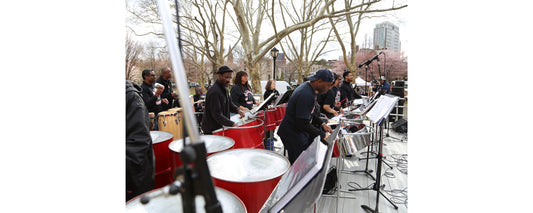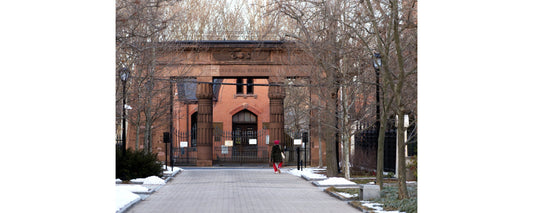Connecticut has 253 miles of shoreline, but in the late 1960s only seven miles of it were accessible to the public. That rankled activist Ned Coll, and he set out to do something about it. The story of a controversial, theatrical, passionate campaign that played out over more than a decade in the 1960s and ’70s is the subject of a new book by Andrew W. Kahrl, Free the Beaches: The Story of Ned Coll and the Battle for America’s Most Exclusive Shoreline. Published this spring by Yale University Press, Kahrl’s book retells a compelling story that many New Haveners will remember firsthand.
The coastline—“land covered by tidal water”—has been understood to be public since an 1892 Supreme Court decision, Kahrl explains. Connecticut law draws the line between what’s public and what’s private at the “mean high water mark.” But beginning in the 1920s, Kahrl writes, developers began snatching up shoreline property, and by 1972 the New York Times lamented, “It has become virtually impossible for a city-dweller to venture into the suburbs and find an inexpensive, pleasant place to swim, sun, or relax within a single day’s drive.”
Lest this seem like a luxury, Kahrl begins Free the Beaches with some context: the beach was one of the “undefended fronts that could be used to challenge broader exclusionary practices”—zoning laws that kept “the poor and people of color” out of wealthy white enclaves. In other words, fighting for access to the beach could establish a precedent to fight for much more.
Ned Coll wasn’t the first to undertake this challenge. In 1966, an interracial group of women from New Haven set out to gain access to town beaches in East Haven, Branford and Madison. When, as expected, they were turned away, they filed a lawsuit. It was unsuccessful, but the fight had begun.
Coll, who is white, was first inspired to undertake his lifelong campaign against racial inequality by an influential black professor at Fairfield University named Walter Petry. Following the assassination of President John F. Kennedy, Coll quit his post-college job with an insurance company and founded Revitalization Corps, an organization that began in Hartford and spread to other cities, offering tutoring, job fairs, food, clothing, holiday toys and whatever else it could to fill the needs of the communities it served. Its success in Hartford, at least, rested on a “circle of black women” who “pushed Revitalization Corps to devote its time and energy to getting kids out of the city during the summer months and exposing them to unfamiliar people and places,” Kahrl writes.
During the early and mid-1970s, Coll became infamous in Connecticut for “barreling into quaint shoreline towns unannounced and unloading a bus full of kids from the projects.” He and the North Hartford mothers who chaperoned the trips with him simply told the kids to stay on the wet part of the beach, below the tide line: public property. Their presence was not kindly met.
Coll had critics in both the white community, where his guerilla tactics inflamed passions and pitted neighbors against one another, and the black community, where his “missionary-style approach and negative assumptions about urban life” and his “white liberal paternalism” came under fire. At the same time, volunteers of both races worked side by side with him, praising his dedication to kids and to justice.
Free the Beaches gives plenty of historical context, both local and national, to Coll’s quest to rip down what Kahrl calls the “sand curtain.” It also recounts in detail anecdotes both hilarious and horrifying as Coll and his ragtag group of volunteers, moms and kids stormed the beaches by school bus and motorboat and parachute. As mother and volunteer Earlie Powell recalls those trips in the book, often the black kids from North Hartford would befriend suburban white kids on the beach—until white parents whisked their offspring away. The towns of Old Lyme, Clinton, Madison, Fairfield and Greenwich play particularly ugly roles in the drama. Much of what was said and done by the residents of those towns, defending what they perceived as their hard-earned private property, sounds all too familiar 40 years later.
Coll’s flair for attracting the attention of suburbanites and the media didn’t stop with raids on Connecticut’s beaches. In 1972 he ran for president, a campaign best remembered for the moment during a New Hampshire debate when he brandished a rubber rat, representing “conditions in America’s inner cities.” In 1977 Coll walked Connecticut’s entire coastline with volunteers Anne Loiseau and Rob Carbonneau in order to draw attention to the need for greater public access. The trio found numerous violations of state coastal permits along the way in the form of illegal fences, walls and jetties. “Public opinion polls continued to show that a majority of the state’s citizens agreed with Ned on the issues, even if they disagreed with his tactics,” Kahrl writes.
By the 1980s, according to Kahrl, Connecticut “ranked forty-ninth out of fifty [states] in total amount of public land per capita. When it came to building wealth and isolating the poor, Connecticut was without equal.” Ultimately, it was a lawsuit filed by someone else that made the shoreline’s beaches “public.” A law student named Brenden Leydon sued after being denied access to Greenwich Point Park and finally won his case on appeal in 2001. By then, Coll’s personal life and Revitalization Corps had fallen apart, and his increasingly confrontational tactics and lone-wolf demonstrations had alienated many of those in Hartford whom he’d spent the better part of his life trying to help.
Today, Kahrl writes, “the Connecticut coastline is ostensibly open to all of its citizens.” A non-resident day pass to the Surf Club in Madison costs $25 on weekdays and $40 on weekends, including Fridays and holidays. Two of Fairfield’s five beaches are open to the public between Memorial Day and Labor Day at a non-resident cost of $20 on weekdays and $50 on weekends and holidays, and buses are $200 “by permission only,” its website says.
Ultimately, for Coll, opening the beaches “was more a stage for enacting his dramatization of wealth and poverty than a cause unto itself,” Kahrl writes. Coll reportedly often quoted a 1968 report by the Kerner Commission: “What white Americans have never fully understood—but what the Negro can never forget—is that white society is deeply implicated in the ghetto. White institutions created it, white institutions maintain it, and white society condones it.” This is what Coll “spent a lifetime trying to understand, trying to get other white Americans to understand, and once they understood, to do something—anything—about…”
Free the Beaches isn’t always easy reading. But it’s part of our state’s story. Kahrl suggests it may even guide us as we face what comes next for our coastline. As he sees it, Coll was one of the first to understand “that the struggles for racial equality and environmental protection are inseparable and must be fought as one.”
Free the Beaches: The Story of Ned Coll and the Battle for America’s Most Exclusive Shoreline
by Andrew W. Kahrl
Online: Book Website | Yale University Press Website
To Buy: RJ Julia | Barnes & Noble | Amazon
Written by Kathy Leonard Czepiel. Images photographed by Bob Adelman and provided courtesy of Yale University Press. Image 1 depicts “children from Hartford’s North End play[ing] at the private Madison Beach Club.” Image 2 depicts “members of Revitalization Corps march[ing] for open beaches in the town of Old Saybrook.”







